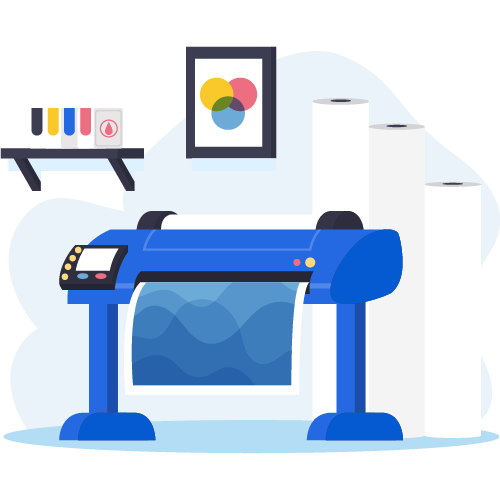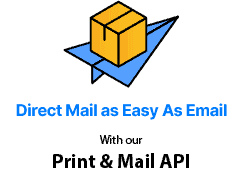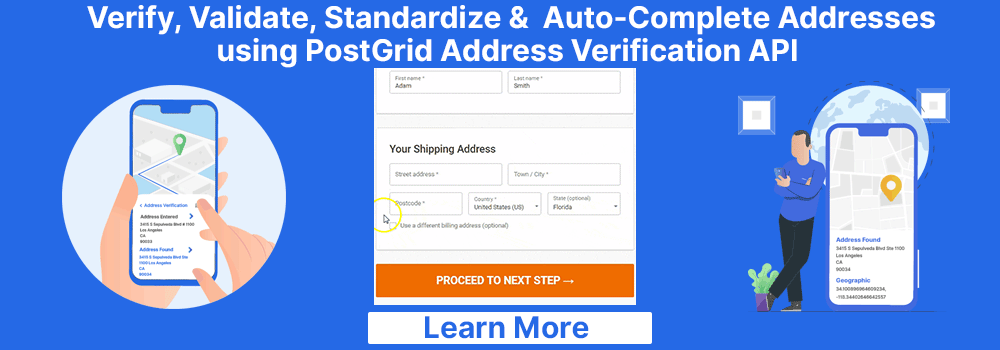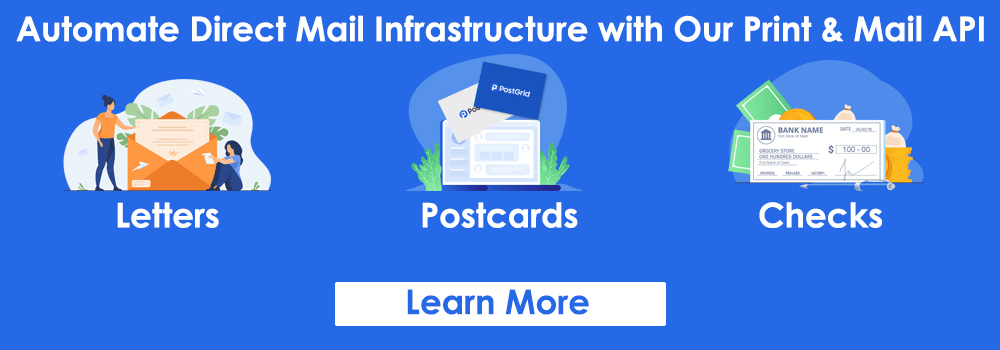Difference Between Print and Web Design
What Is the Significant Difference Between Print and Web Design and Which One Is Better?
Are you confused regarding which marketing channel to use for your business? Today, both print and digital media are at par with one another. But, it would help to know the difference between print and web design to help you make informed decisions.
Print designers have a bigger canvas size and better control over the artwork elements. They can design extremely intricate pieces ranging from newspapers and magazines to business cards and postcards.

However, web design also offers various benefits like adding hyperlinks, videos, quick navigation, etc. You must know the various print and web design differences to see which one suits best for your brand.
In this blog, we will cover these differences to help you understand how to work with both these channels simultaneously.
What are Web and Print Designs?
Before we get into the top 3 differences between print and web design, let’s understand what they mean.
As the name goes, the print design consists of artworks printed on something. Designers may create these artworks using digital tools like HTML, but the final version is in printed form.
Print design covers products, like
They also consist of t-shirts, mugs, etc., and are generally used for personal and corporate gifting.
Are you interested in knowing more about corporate gifting? Click here.
On the other hand, web design is used to create websites like the one you are reading this article on. It is not restricted to graphic design only but consists of user experience, navigation, usability, and accessibility.
The prime difference between print design and web design is that print is tangible! You can see a web design and print artwork but only touch printed materials.
All the items we mentioned above, like flyers, newspapers, etc., can be felt. Sure, you may not be able to reach over and touch one of those big posters on the streets of Manhattan. But you get the point, right?
In contrast, users can only view web design on internet-enabled devices like mobile phones and computers.
Let’s dive into the other prime differences between print and web design principles.
What are the Most Crucial Print and Web Design Differences?
Print and web designs are like two sides of a coin. They may not exactly go hand-in-hand but are both crucial for your brand marketing.
With growing competition, it only makes sense to employ all possible marketing forms to develop one robust strategy to increase sales.
So, let us now answer the long-awaited question- what is the difference between web design and print design in detail:
Dimensionality: Screen vs. Canvas
Print designs are 2-dimensional, allowing readers to turn pages and giving them a canvas experience. But, web design is N-dimensional and 1-dimensional, offering a scrolling experience to readers.
A print design is usually developed for fixed-size canvases, often huge for designing newspapers, magazines, etc. There isn’t much interplay between print spreads, but the tangibility they offer makes them superior.
Naturally, web and print designs are viewed and approached differently by people. As said earlier, the prime difference between web and print design is tangibility.
Holding something is very different than viewing something on digital screens. You can hold a brochure, fold a pamphlet, turn pages of a book, share a postcard with someone, etc. But, these actions are practically impossible with a digital design.
Also, printing effects like embossing make the experience even better. Marketers can use any paper stock to engage the users’ senses. They may even add different smells to enhance the feel and touch of their printed items.
The difference between web design and print design is that digital designs can never offer such experiences to readers. But, before you judge web design too quickly, note that you can always add 3-D images and overlays to make it appealing.
Yes, there are many options in web design that help you introduce texture to the digital world. But, remember that online customers are impatient and may not wait for your high-resolution images to download.
Hence, another difference between print and digital design is accessibility. Users can access print media any time they want. But, digital media depends on the availability of devices, bandwidth speed, etc.
Web and print designs both have their own appeal and value. For example, you may love the smell of new books, but you may also like scrolling through your list of e-books with custom backdrops.
Changeability
There is no turning back once your print design is ready and printed. However, if you decide to change it, it will cost you tons of time and money to re-print the whole thing. Thus, changeability is also one of the top differences between print design and web design principles.
While learning about print vs. digital graphic design in terms of lifespan, you must know that web designs last way longer than prints. You can tweak or completely change your web designs according to your requirements, and it won’t cost you an arm and a leg.
Let us take the example of a news website that posts different news articles with new images and texts every day. But, re-printing is complicated, lengthy, and expensive. There is no scope to modify your design once your print design is out for printing.
Navigation and Usability
Both web and print design offer some level of navigational control. If you want to know the main difference between print and web design, navigation is a point you can’t miss!
Print designs only allow users to flip pages, providing a plain user interface. Page-turning is often not considered a navigational feature due to limited scope. Unlike digital interfaces, it doesn’t offer menus to guide users to different pages that they need to read.
When analyzing the difference between graphic design- print and web, remember that only web designs offer the opportunity to control navigations. You may add pointers or text blocks in your print design, but that’s about it.
Undoubtedly, web design wins the print vs. digital graphic design debate in this area. Hypertext navigation is a significant aspect of web design, allowing you to make decisions, like:
- Interlinking pages
- Visualizing the user’s location on the page
- Explaining where users can navigate and where the links lead
- Designing the information architecture format, etc.
Thus, you can list dimensionality, changeability, and navigation when asked to name three differences between print and web design.
Compatibility
Compatibility makes a huge impact on the user experience that a web design offers, be it in a website, e-newsletter, email, or other formats. But, compatibility may not be an issue for the print world in the web and print design competition.
All web designs need to operate and display properly on different browsers, operating systems, and browsers. It can be hard to achieve this objective for digital graphic designers as each browser and OS have certain restrictions. For example, Apple’s iOS does not let users view any Flash-based web design.
Thus, while discussing the differences between print and web design principles, remember that web designers need to put in a lot of effort to make their designs user-friendly. On the other hand, print designs don’t face such issues, eradicating all the extra trouble!
Typography
Web design and print artworks give you the freedom to choose your fonts. But, this freedom is restricted for web designers as they need to ensure readability on all devices. Majorly, they select the sans-serif font that can be displayed clearly on digital media platforms.
While learning the difference between print and digital artworks, consider your typographical and design requirements. Print designs are an excellent option to explore different fonts and have complete control over the typography.
You can purchase or download fonts for both web and print designs easily. Please note that there are two categories of fonts, namely desktop fonts and web fonts.
Users can install desktop fonts on their computers and use them for designing print artworks. On the other hand, Web fonts are developed and optimized for web designs with the help of CSS.
Regarding the difference between print and digital design, web design poses several font-related limitations. But, print designers can experiment with as many font sizes and styles as they like and give unique looks to their artworks.
Canvas Size and Resolution
In print vs. digital graphic design discussion, print designs will always be superior in size and resolution. Though you may stick with standard sizes for your postcards, business cards, etc., the possibilities are endless. Depending on your format and message, you can use any paper size that you need.
If you are interested in understanding how direct mail sizes work, you will like these pages:
Undoubtedly, size is a crucial factor in print and web design differences. The term ‘size’ is used abstractly for web designs; the sizes are restricted to a specific number of devices and browsers.
Next on our list is the design resolution. It depicts the clarity of your images and graphics in the final version. There are two terms related to it that you should know about- DPI and PPI.
DPI (dots per inch) is used for print processes. It represents the density of ink dots printed on every inch of your canvas. Many people think that both web and print designs use the term DPI, but they are sadly wrong!
Another difference between print and web design principles is DPI vs. PPI. For web artworks, designers use PPI (pixels per inch) to check the quality of their graphics.
The acceptable picture quality is 72 PPI, but designers can increase it if needed. Again, print designers have the edge over web designers as they have more control over the resolution. In fact, the quality of a web design and print design can never match.
Although, in today’s time, users can zoom in and view each part of the image in high resolution. Thus, you can always make up for the limitations of web design by using such features.
Multimedia Experiences
Out of all the print and web design differences, multimedia and interactivity are the significant ones. Print media can wow readers with its high-impact visualization. Still, web designs increase user engagement by overlaying multiple pages and driving traffic to your website.
Thus, when debating better between web and print design, interactivity always sides with digital pages. Here are some things that web design can but print artworks cannot:
- Adding pop-ups
- Using voiceovers and audio files
- Incorporating animation and videos
- Interlinking to take users to another page with more information, etc.
Hence, the difference between print and web design also consists of a multimedia experience for users.
Color
Designers would know that color is a visible difference between print design and web design. The colors you view over a screen are very different from those printed somewhere. There are two color spaces involved: RGB for web design and CMYK for print artworks.
Your printed items must look similar to your web design. And you can achieve that for your web and print designs using the Pantone Matching System.
Let’s break it down a little! CMYK represents four ink colors: cyan, magenta, yellow, and black. These colors help designers give the right look to their artworks to make them look the same after printing. n
RGB refers to all the colors you look at in a web design- red, green, and blue dots that combine to develop digitally visible colors. Both CMYK and RGB are crucial aspects to understand while learning about web design and print design.
How Can PostGrid Help Improve Your Printing Experience?
Now that you know the print and web design differences, let us help you improve your marketing strategies. PostGrid offers automated direct mail services that take your printing processes to the next level.
Our API is speedy, scalable, and highly efficient to help you create and print your items in just two business days. Some of our prime benefits include:
- Zapier integration
- Free HTML design templates
- Address verification
- Helpful API docs
- Campaign reports and insights, etc.
Quick read: PostGrid for Customer Success Teams.
Relishing the Similarities Between Print and Web Design
Despite the vast differences between print and web design principles, there are some similarities. For starters, both depend on valuable information structured properly to enhance customer satisfaction.
In addition to that, there are also some basic rules that both web and print designs follow, like:
- Use grid-based designs
- Add enough white space
- Include CTAs
- Use short paragraphs and sentences, etc.
Sure, you can master both web design and print artworks with some effort. But, try using both of them in the right proportions to get the best out of them. If you need any help with your offline print and mail campaigns, try using PostGrid’s print and mail API.
Click here to see how you can revolutionize your print and mail campaigns and achieve better results with PostGrid!
Ready to Get Started?
Start transforming and automating your offline communications with PostGrid
The post Difference Between Print and Web Design appeared first on PostGrid.
source https://www.postgrid.com/difference-between-print-and-web-design/
source https://postgridplatform.tumblr.com/post/678269517156188160




Comments
Post a Comment